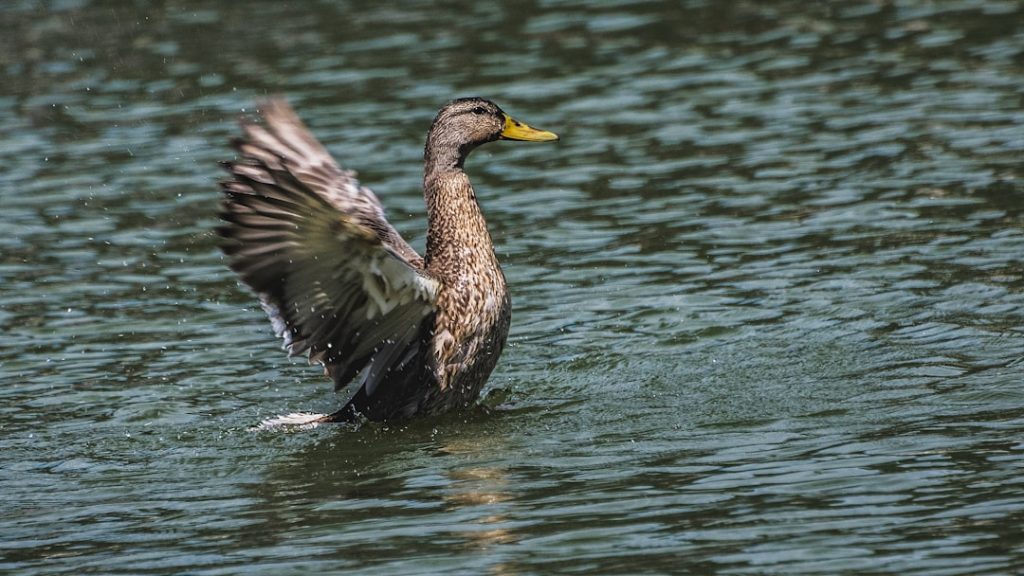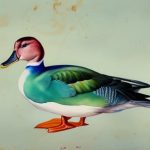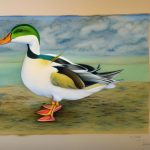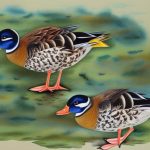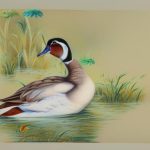Non-flying duck breeds are a unique and fascinating group of waterfowl that have been selectively bred for their inability to fly. While most duck breeds are capable of flight, non-flying duck breeds have been developed specifically for their grounded nature. These ducks are popular among hobbyists and small-scale farmers for their calm demeanor, ease of care, and suitability for smaller properties. Non-flying duck breeds are also well-suited for urban and suburban environments where flight can be a concern. In this article, we will explore the characteristics, popular breeds, care and housing requirements, as well as the benefits and challenges of keeping non-flying duck breeds.
Table of Contents
Key Takeaways
- Non-flying duck breeds are a unique and interesting option for poultry enthusiasts.
- Non-flying duck breeds are known for their calm and friendly nature, making them great for backyard settings.
- Popular non-flying duck breeds include the Pekin, Muscovy, and Indian Runner ducks.
- Care and housing for non-flying duck breeds require a secure and spacious environment with access to water for swimming.
- Keeping non-flying duck breeds can provide benefits such as pest control, egg production, and companionship, but also come with challenges such as potential predators and special housing needs.
Characteristics of Non-Flying Duck Breeds
Non-flying duck breeds are characterized by their heavy body, short wings, and reduced flight muscles. These physical traits make it difficult for them to achieve sustained flight, if they can fly at all. Instead, non-flying duck breeds are more at home on the water or waddling around on land. They are known for their calm and friendly disposition, making them a popular choice for families with children or those looking for a low-maintenance pet. Non-flying duck breeds also tend to be good foragers, making them an excellent choice for pest control in gardens or on small farms. Additionally, these ducks are often more cold-hardy than their flying counterparts, making them well-suited for colder climates. Overall, non-flying duck breeds are known for their adaptability and ease of care, making them an attractive option for those looking to add ducks to their homestead or backyard.
Popular Non-Flying Duck Breeds
Several non-flying duck breeds have gained popularity among duck enthusiasts and small-scale farmers. One of the most well-known non-flying duck breeds is the Indian Runner. This breed is characterized by its upright stance and distinctive running gait, which sets it apart from other duck breeds. Indian Runners are known for their prolific egg-laying abilities and are often kept for their high egg production. Another popular non-flying duck breed is the Khaki Campbell. This breed is prized for its excellent egg-laying capabilities, often outperforming even the best chicken layers. Khaki Campbells are also known for their calm and friendly nature, making them a favorite among duck keepers. Other popular non-flying duck breeds include the Buff Orpington, Swedish, and Cayuga ducks, each with its own unique characteristics and qualities that make them well-suited for different purposes and environments.
Care and Housing for Non-Flying Duck Breeds
Non-flying duck breeds have specific care and housing requirements that should be considered before bringing them into your home or farm. These ducks need access to water for swimming and bathing, as well as a secure enclosure to protect them from predators. While they may not be able to fly, non-flying duck breeds still require ample space to roam and explore. A well-ventilated coop or shelter is essential to protect them from the elements and provide a safe place to roost at night. Additionally, non-flying duck breeds need a balanced diet that includes a commercial waterfowl feed, as well as access to fresh greens, insects, and other natural forage. It’s important to provide clean water for drinking and bathing, as ducks are prone to respiratory issues if they do not have access to clean water. Overall, providing a suitable environment with proper nutrition and protection is essential for the health and well-being of non-flying duck breeds.
In terms of housing, non-flying duck breeds require a secure enclosure that provides protection from predators and the elements. This can include a predator-proof coop or shelter with adequate ventilation and space for nesting and roosting. Access to a pond or shallow water source is also important for non-flying duck breeds, as they require water for swimming, bathing, and foraging. If a natural water source is not available, a shallow kiddie pool or pond can be provided to meet their needs. It’s important to regularly clean and maintain their living space to prevent the buildup of waste and bacteria, which can lead to health issues for the ducks. Additionally, providing enrichment such as toys, perches, and hiding spots can help keep non-flying duck breeds mentally stimulated and happy. Overall, proper care and housing are essential for the health and well-being of non-flying duck breeds.
Benefits of Keeping Non-Flying Duck Breeds
There are several benefits to keeping non-flying duck breeds that make them an attractive option for homesteaders, small-scale farmers, and hobbyists. One of the main benefits is their calm and friendly nature, making them suitable for families with children or those looking for a low-maintenance pet. Non-flying duck breeds are also excellent foragers and can help control pests in gardens or on small farms. Their prolific egg-laying abilities make them a valuable addition to any small-scale egg production operation. Additionally, non-flying duck breeds are well-suited for urban and suburban environments where flight can be a concern. Their adaptability to various climates and ease of care make them an ideal choice for those looking to add ducks to their property without the need for extensive space or specialized housing. Overall, the benefits of keeping non-flying duck breeds make them a popular choice for those looking to add waterfowl to their homestead or backyard.
Another benefit of keeping non-flying duck breeds is their cold-hardiness, making them well-suited for colder climates. This can be particularly advantageous for those living in northern regions where extreme temperatures are common. Non-flying duck breeds also have a lower risk of escape compared to flying breeds, reducing the likelihood of them wandering off or getting lost. Their reduced flight ability can also make them easier to handle and manage compared to flying ducks, especially in situations where containment is necessary. Additionally, non-flying duck breeds are known for their adaptability to various living conditions, making them an excellent choice for those with limited space or resources. Overall, the benefits of keeping non-flying duck breeds make them an attractive option for those looking to add ducks to their property.
Challenges of Keeping Non-Flying Duck Breeds
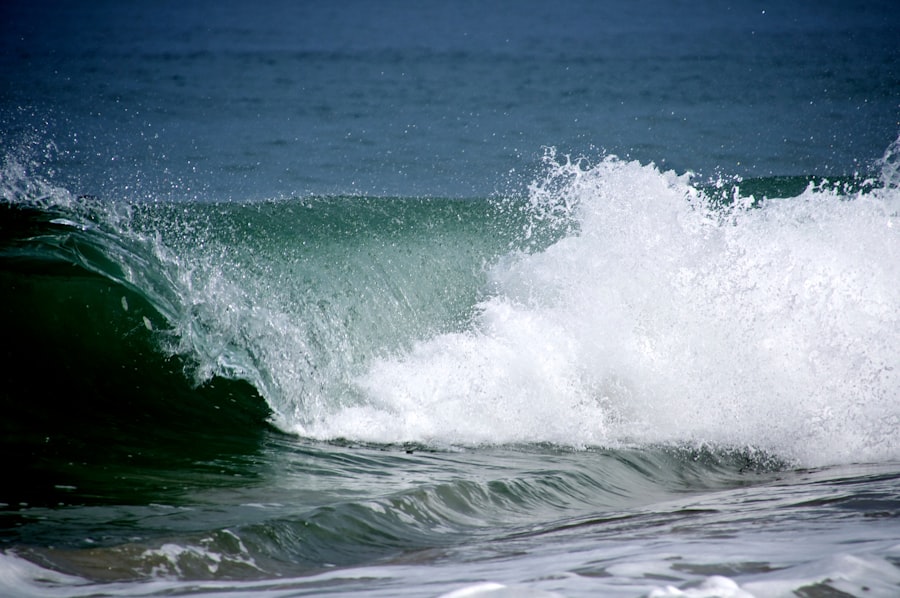
While there are many benefits to keeping non-flying duck breeds, there are also some challenges that should be considered before bringing them into your home or farm. One challenge is providing adequate water access for swimming and bathing, as non-flying duck breeds still have the same water requirements as their flying counterparts. This can be particularly challenging for those without access to a natural water source, requiring the installation of a suitable pond or kiddie pool. Additionally, non-flying duck breeds can be more susceptible to predators due to their reduced ability to escape danger through flight. This requires extra precautions in securing their enclosure and providing adequate protection from potential threats.
Another challenge of keeping non-flying duck breeds is their potential for overeating and obesity if not provided with proper nutrition and exercise. It’s important to monitor their diet and ensure they have access to natural forage and opportunities for physical activity to prevent health issues related to obesity. Additionally, non-flying duck breeds may require additional care during molting seasons when they are unable to fly and may be more vulnerable to predators. Providing extra protection during these times is essential to ensure their safety and well-being. Overall, while there are challenges associated with keeping non-flying duck breeds, proper planning and management can help mitigate these concerns.
Conclusion and Considerations for Choosing Non-Flying Duck Breeds
In conclusion, non-flying duck breeds offer unique characteristics that make them an attractive option for those looking to add ducks to their property. Their calm demeanor, prolific egg-laying abilities, adaptability to various living conditions, and cold-hardiness make them well-suited for small-scale farming, homesteading, and hobbyist endeavors. However, it’s important to consider the specific care and housing requirements of non-flying duck breeds before bringing them into your home or farm. Providing adequate water access, secure enclosures, proper nutrition, and protection from predators are essential for the health and well-being of these ducks.
When considering non-flying duck breeds, it’s important to assess your property and resources to ensure you can meet their needs effectively. Access to water, suitable housing, predator protection, and proper nutrition should all be carefully considered before bringing non-flying duck breeds into your care. With proper planning and management, non-flying duck breeds can be a valuable addition to any homestead or backyard setting, providing companionship, pest control, and egg production in a manageable and low-maintenance package.
If you’re interested in learning more about duck breeds that don’t fly, you might also want to check out this informative article on “The Chicken Coop Country Diner” at PoultryWizard. It provides valuable insights into creating a comfortable and functional space for your poultry.
FAQs
What are some duck breeds that don’t fly?
Some duck breeds that are known for their inability to fly include the Indian Runner, the Khaki Campbell, and the Pekin duck.
Why can’t these duck breeds fly?
These duck breeds have been selectively bred for their meat and egg production, resulting in larger body sizes and shorter wings, which makes it difficult for them to take flight.
Are there any advantages to having ducks that don’t fly?
Ducks that don’t fly are often preferred for domestic settings, such as farms or backyard ponds, as they are less likely to wander off or escape.
What are some considerations for caring for ducks that don’t fly?
It’s important to provide a safe and secure enclosure for ducks that don’t fly, as they are more vulnerable to predators without the ability to escape by flying. Additionally, providing ample space for them to roam and forage is important for their well-being.
Can ducks that don’t fly still swim?
Yes, ducks that don’t fly are still capable swimmers and often enjoy spending time in water. It’s important to provide them with access to a clean and safe water source for swimming and bathing.
Meet Walter, the feathered-friend fanatic of Florida! Nestled in the sunshine state, Walter struts through life with his feathered companions, clucking his way to happiness. With a coop that’s fancier than a five-star hotel, he’s the Don Juan of the chicken world. When he’s not teaching his hens to do the cha-cha, you’ll find him in a heated debate with his prized rooster, Sir Clucks-a-Lot. Walter’s poultry passion is no yolk; he’s the sunny-side-up guy you never knew you needed in your flock of friends!

